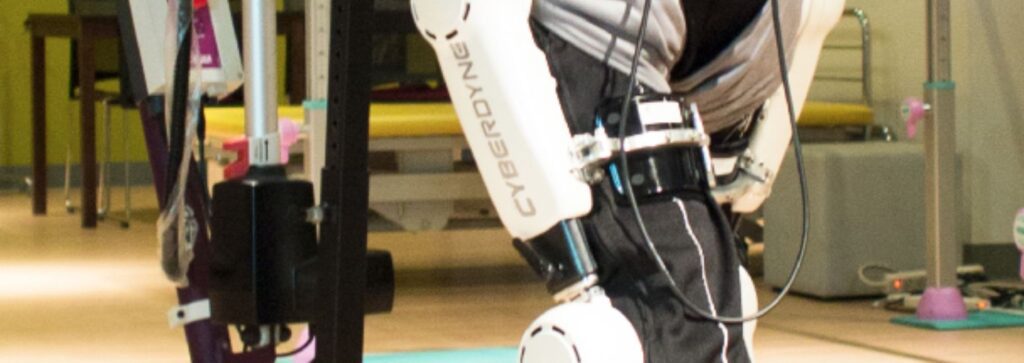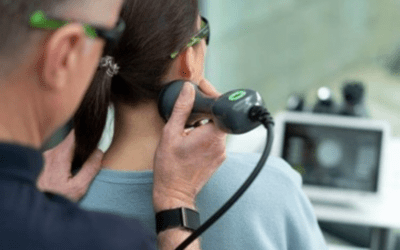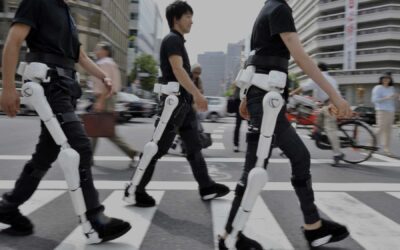The face of Neuro rehabilitation has progressively changed in recent years. New technologies have been reported to enhance the effectiveness of therapeutic rehabilitation strategies in conditions such as stroke, Parkinson’s disease, spinal cord injury, severe brain injury spasticity, and cognitive disorders.
New trends include robotic-assisted training, virtual reality, functional electrostimulation, and non-invasive brain stimulation (NIBS) to enhance the intensity and quality of Neurorehabilitation, and to manipulate brain excitability and plasticity, as well as innovative approaches such as assistive technology…
Robot-assisted gait training:

Robotic-assisted gait training (RAGT) or robotic-assisted walking is the cutting-edge technology used in the rehabilitation of neurological injuries and conditions like spinal cord injury, brain injury, stroke, multiple sclerosis, Parkinson’s, and cerebral palsy.
Robotic rehabilitation therapy offers highly controlled, repetitive, and intensive training.
For example, patients benefit from the use of exoskeletons for gait rehabilitation or robotic arms for upper and lower limb recovery.
Virtual Reality:
VR for Neurological Disease is proven to be a good tool. This technology has been shown to facilitate recovery and enhance motor or cognitive functions in patients with Alzheimer’s disease (AD), Parkinson’s disease, stroke, epilepsy, and dementia. Multiple Sclerosis, Bell’s palsy, and other neurological disorders are among the most common.
Functional Electrostimulation:
Functional electrical stimulation (FES), also known as functional neuromuscular stimulation (FNS) or neuromuscular electrical stimulation (NMES) is the method of applying safe levels of electric current to activate the damaged or disabled neuromuscular system.
Non-invasive brain stimulation:
Non-invasive brain stimulation (NIBS) techniques provide relatively new therapeutic options that show promise in treating varieties of neurological disorders through reducing or modulating cortical excitability and plasticity.
Benefits of Therapeutic Strategies
- Preserve sensory-motor interaction
- Stimulate neuroplasticity
- Enhance coordination and promote motor recovery
- Allow locomotor training
- Regulate muscular activity

Vibramoov, Cyberdyne-HAL, and Lightforce Lasers are unique treatment techniques that use functional proprioceptive stimulation as a means to help patients promote the neuromuscular system.
Vibramoov uses Functional Proprioceptive Stimulation combined with the passive movement of ‘Continuous Passive Mobilisation to improve the range of motion due to its neurosensory, perceptual, and motor components.
Cyberdyne Technology offers healthcare professionals a unique opportunity to preserve and enhance the sensory-motor functions of patients suffering from motor impairments and enables the patient to maintain this interactive transmission of neuromuscular information throughout the rehabilitation process.
Lightforce Lasers work by flooding the tissue with photons, which energises cells resulting in increased circulation to the injured area and ultimately pain reduction
So, connect with us at www.rehabmodalities.com to learn more about our rehabilitation therapy.
To know more write to us: info@rehabmodalities.com



